Koolance EX2-755-R User manual
- Category
- Computer liquid cooling
- Type
- User manual
This manual is also suitable for

Protected by U.S. Patents 6,313,990; 6,664,627; 7,167,366; 7,295,436
Other Technology Pending U.S. & World-Wide Patents
Superior Liquid Cooling Systems
®
English v1.1
www.koolance.com
ISO
9001
Printed in Korea
EX2-755, EX2-1055
User’s Manual
EX2-755, EX2-1055
User’s Manual

i
User Manual
This User Manual is updated regularly. Please be sure to check our support page for a newer
version of this guide: www.koolance.com/support
GENERAL PRECAUTION
Please read this manual carefully before beginning the installation of your Koolance system.
This manual assumes the user has basic experience in building and configuring computer
systems. Information referring to traditional hardware assembly is intentionally brief.
!
WARNING: Indicates a potentially hazardous situation which, if not avoided,
could result in personal injury or be life-threatening.
!
CAUTION: Indicates a potentially hazardous situation which, if not avoided,
may result in damage to equipment or property.
PROHIBITED: Indicates a prohibited action.
PROHIBITED USE
This product is designed, developed and manufactured as contemplated for general use,
including without limitation: general office use, personal use and household use, but is not
designed, developed and manufactured as contemplated for use accompanying fatal risks or
dangers that, unless extremely high safety is secured, could lead directly to death, personal
injury, severe physical damage or other loss, including without limitation: nuclear power core
control, airplane control, air traffic control, mass transport operation control, life support,
or weapon launching control. If these products are used in such hazardous environments,
Koolance Incorporated does not warrant them.
TRADEMARKS
The Koolance name and logo are trademarks or registered trademarks of Koolance, Inc.
Other company and product names used in this publication are for identification purposes
only and may be trademarks or registered trademarks of their respective companies.
COPYRIGHT
All rights reserved. Copyright (C) Koolance Incorporated.
ABOUT SIGNS
Throughout this document, critical information is highlighted in gray-colored boxes. The
following symbols are intended to help prevent any situation which may cause personal
injury and/or damage to equipment:

ii
iii
User Manual
WARNING: The Koolance liquid & coolant pack contain chemicals
which may be harmful or fatal if swallowed. KEEP THIS AND ALL
DANGEROUS CHEMICALS OUT OF THE REACH OF CHILDREN. If
ingestion has occurred, seek medical attention immediately. Give two
glasses of water. Do not induce vomiting. In the case of eye contact,
flush eyes immediately with water for 15 minutes. Remove contact
lenses. Call a physician if irritation persists. Some individuals may
have an allergic skin reaction with the solution, although generally mild.
Avoid contact as much as possible, and wash exposed area with soap
and water for at least 15 minutes. If irritation persists, or if contact has
been prolonged, get medical help. For further information, please visit
our website at: www.koolance.com
CAUTION: Installation of third-party cooling products is done at the
user’s own risk. Koolance Inc. assumes no responsibility for damage
or loss due to the installation or use of this product. Additionally, adding
liquid coolers and other components to computer hardware may void
the hardware manufacturer’s original warranty. If you have any specific
questions on warranty coverage, please contact your component or
computer manufacturer. If there is any point of installation that you do
not understand, please contact our Technical Support Staff at: tech@
koolance.com, or visit our website at: www.koolance.com/support
!
KOOLANCE CONTACT INFORMATION
Koolance Incorporated (USA)
Address: 2840 W. Valley Hwy. N., Auburn, WA, USA 98001
Telephone: +01-253-893-7551
Fax: +01-253-893-7573
Sales Email: [email protected]
Tech Email: [email protected]
!
Table of Contents
System Features 1
System Diagram ............................................................................................. 2
LED Display Panel .......................................................................................... 3
Installation 6
Positioning the Cooling System ...................................................................... 7
External Nozzles & Power Cable .................................................................... 8
Connecting the Slot Adapter ........................................................................... 9
Installing the Slot Adapter ............................................................................. 10
Power Connection ......................................................................................... 11
ATX Pass-Through Lead ............................................................................... 12
AC Power Option .......................................................................................... 13
Relay Jumper ................................................................................................ 13
Temperature Sensor Placement ................................................................... 13
Cooler & Tubing Configuration ...................................................................... 14
Disconnecting Hoses .................................................................................... 16
Hose Lengths ................................................................................................ 16
Filling & Maintenance 18
Testing & Filling ............................................................................................. 19
Adding Coolers & Maintenance .................................................................... 21
Troubleshooting ............................................................................................ 22
Limited Warranty ........................................................................................... 25

iv
1
User Manual
- External Power Cable
- Slot Adapter (includes temperature sensors and ATX lead)
- Rubber foot pads
- ATX power jumper wire
- User Manual
Included Hardware
flat-head screw driver
phillips-head screw driver
pliers
scissors
Required Tools
During installation, you may need the following tools:
long-nose pliers
Chapter1
System Features

2
3
User Manual
Exos System Diagram
Reservoir & Pump
Radiator Cooling Fans
(quantity depends on model)
Coolant Inlet
Power Connection
LED Display Panel
Coolant Outlet
Current Mode
Value
Mode Select
Display in ºC or ºF
Decrease Setting
Increase Setting
System Features
CAUTION: Due to electrical tolerances, the lowest pump speed set-
tings may stop the pump from running. Be sure the pump continues
to run when operated at lower speeds.
!
Radiator - The primary heat exchanger is the main cooling element, and provides
high thermal dissipation in a relatively small area. Inside, a metal web of louver
fins stretch between flat liquid pipes.
Reservoir & Pump - The coolant tank is transparent for easy liquid-level monitoring
through the top window. It is filled through a small metal fill port on top. The reservoir
is illuminated for easy observation.
LED Display Panel
CAUTION: This cooling system allows full user control of hardware
safety settings, such as audio alarm, shutdown, and pump speed.
Please be sure to configure your LED Display Panel properly, or dam-
age to your computer, data, and/or equipment could result.
!
Modes
There are seven display options. All are reached by continually pressing the SET
(mode select) button:
1. Temperature sensor #1 is displayed
2. Temperature sensor #2 is displayed
3. Temperature sensor #3 is displayed
4. All temperature sensors are cycled automatically
5. Fan setting is displayed (mode “F” is shown)
6. Pump setting is displayed (mode “P” is shown)
7. All temperatures, fan, and pump settings are cycled automatically
Temperature Sensors
This cooling system can monitor up to 3 included temperature sensors. The first
LED digit indicates which sensor channel is currently displayed in the temperature
reading. To cycle through sensors, press SET.
Fan Speed
This option adjusts the radiator fan speed. Higher speeds can improve performance,
but will produce more noise. There is 1 automatic and 10 manual fan settings (1-
10). From the fan (“F”) or any cycle mode, press the ▼ or ▲ buttons to adjust fan
settings, or hold down an arrow to skip to the lowest or highest mode directly.
Automatic mode will adjust the fans for you based on temperature values from
sensor #1. This mode is reached by lowering the fan setting to “0” (Aut / A will
be displayed).
Pump Speed
There are 10 manual pump settings (1-10). From the pump (“P”) mode, press
Relay Switch

4
5
User Manual
System Features
To change this setting for an individual sensor, choose the desired channel with
SET, and press and hold ▼ + ▲ together for 3 seconds. The alarm temperature
will begin flashing. You may change this value from 0ºC (32ºF) up to 99ºC (210ºF).
The normal temperature reading will resume if you do not press any buttons for
4 seconds.
To reset all temperature alarms to their default (55ºC / 131ºF) setting, press and
hold the ºC/F button until “dEF” flashes in the display. NOTE: This will also reset
the fan speed mode to “auto”, and pump power to 100%.
If any sensor reaches 3ºC (5ºF) above the alarm temperature, the system will
activate the “ATX pass-through” wire relay. For a computer, this is equivalent to
holding in the power button for several seconds to force it to shut down. With default
alarm settings, this means the shutdown signal is sent if any sensor reaches 58ºC
(136ºF). See “Relay Jumper” for configuring the shutdown signal.
CAUTION: Generally, sensors report liquid temperature at the water
block, which is typically 5-10°C (9-18°F) lower than the actual heat
source. This difference must be considered if adjusting alarm/shut-
down temperatures. Activating alarm/shutdown modes at too high of
temperature may be unsafe. Please see a Koolance CPU water block
user manual for an example of attaching this sensor.
!
the ▼ or ▲ buttons to adjust pump settings, or hold down an arrow to skip to the
lowest or highest mode directly. There is no automatic mode for the pump.
Manual
Mode
Auto Mode Temperature
Range
Fan Duty
μs
Fan Power
%
Pump
Voltage
Pump
Power %
1 0 - 35ºC (32 - 95ºF) 5 20 7.6 60
2 36 - 37ºC (97 - 99ºF) 6 24 7.8 62
3 38 - 39ºC (100 - 102ºF) 7 28 8.1 64
4 40 - 41ºC (104 - 106ºF) 9 36 8.4 66
5 42 - 43ºC (108 - 109ºF) 11 44 8.7 69
6 44 - 45ºC (111 - 113ºF) 13 52 9.1 72
7 46 - 47ºC (115 - 117ºF) 16 64 9.6 76
8 48 - 49ºC (118 - 120ºF) 19 76 10.5 84
9 50 - 51ºC (122 - 124ºF) 22 88 11.3 90
10 52 - 99ºC (126 - 210ºF) 25 100 12.6 100
EX2-1055
EX2-755
Manual
Mode
Auto Mode Temperature
Range
Duty
μs
Fan Power
%
Pump
Power %
1 0 - 35ºC (32 - 95ºF) 5 20 20
2 36 - 37ºC (97 - 99ºF) 6 24 24
3 38 - 39ºC (100 - 102ºF) 7 28 28
4 40 - 41ºC (104 - 106ºF) 9 36 36
5 42 - 43ºC (108 - 109ºF) 11 44 44
6 44 - 45ºC (111 - 113ºF) 13 52 52
7 46 - 47ºC (115 - 117ºF) 16 64 64
8 48 - 49ºC (118 - 120ºF) 19 76 76
9 50 - 51ºC (122 - 124ºF) 22 88 88
10 52 - 99ºC (126 - 210ºF) 25 100 100
Alarm & Shutdown Settings
By default, the Koolance audio alarm will sound if any sensor reaches 55ºC (131ºF).
When the system alarm sounds, the appropriate LED temperature will flash in the
display and the radiator fans and pump will increase to 100% power.

6
7
User Manual
Positioning the Cooling System
The cooling system is designed to operate in various
locations, but it must run upright. Reservoir air filtration is
not possible in all orientations.
Depending on the individual system, placing the cooling
unit 3-6 feet (1-2 meters) away is an acceptable distance
for most installations. Check operating temperatures before
placing in a more remote location.
Extra tubing can be purchased from
Koolance.com or your local reseller.
Rubber pads are included to place on the bottom feet of the cooling system. If
you are frequently transporting your cooling unit, optional “Attachment Straps” are
available which thread through the metal foot loops below the unit.
Rubber Foot Pad
Attachment Straps
Installation
Chapter2
Installation

8
9
User Manual
External Nozzles & Power Cable
Cut tubing into two segments. You
will need to connect each to the rear
nozzles.
Each hose connection will use a threaded compression
ring or hose clamp to keep it secure. Be sure to thread
the compression ring or hose clamp onto the hose
before attaching it.
Once the hoses are connected, plug the
external power cable into the cooling
system.
Squeeze the tube while pushing it firmly
over the nozzle. Tubing should completely
cover the nozzle.
Tighten the connection by sliding the
compression fitting down over the nozzle and
screwing securely. For hose barbs, use pliers
to move it into the proper position.
Install the nozzles you purchased for your cooling
system. It’s recommended to hand-tighten all
fittings to avoid damaging the cooling unit.
Connecting the Slot Adapter
The included Slot Adapter allows the cooling system to connect with ATX computers
through an available card slot. It is responsible for inlet/outlet tubes, the external
power cable, temperature sensors, and shutdown lead.
There are 5 main internal connections to the Slot Interface card which will be made.
The cooling system can appear to operate without some of these connections, but
hardware safety features or temperature monitoring on affected channels will be
disabled.
Start by connecting Temperature Sensors #1, #2, and #3. Then connect the ATX
Pass-Through wire.
ATX Power
Switch
Pass-Through
Temperature
Sensor #1
Temperature
Sensor #2
Temperature
Sensor #3
Optional Fan
Headers
Main 12V Power
Connection
Installation

10
11
User Manual
Install the Slot Adapter into any available rear
card slot in your computer.
Screw the Slot Adapter in place as you would
a normal device.
From the rear of the case, carefully feed
both ends of the liquid tubing through the
Slot Adapter and into the chassis.
Plug the other end of the Exos’ external
power cable into the Slot Adapter.
Installing the Slot Adapter
Installation
Power Connection
The cooling system requires 12V DC up to approximately 30W. Since it’s adapted
internally, it does not use a separate AC outlet when powered by a computer. (See
AC power option later.)
Connect the Slot Adapter’s main power plug to a computer power supply 4-pin
Molex plug. Without this important connection, the unit will NOT operate.
CAUTION: The Power Connection is vital to system operation. A 12V
4-pin plug from the power supply must remain connected to the cooling
system at all times while the computer is in use.
!

12
13
User Manual
ATX Pass-Through Lead
The ATX pass-through lead is
responsible for sending the shut-
down signal if any sensor reaches
3ºC (5ºF) above the preset alarm
temperature (See LED Display for
configuration).
There is no polarity involved with
the ATX lead. Connect the male
ATX power lead from the Slot
Adapter to your computer’s main
chassis power button.
Connect the female ATX power lead from
the Slot Adapter to the motherboard’s
power switch connection (often marked
“PWRSW”, “PWSW”, or “PWBT”).
This is the connection that would normally
receive the chassis power button
directly.
CAUTION: The auto shutdown safety feature of your cooling system will
not function properly without connecting the ATX pass-through lead.
!
To Motherboard
Chassis Power
Button
From Slot
Adapter
Installation
AC Power Option
To power the cooling unit with 100-
240VAC, 50-60Hz, an optional
power inverter is available from
Koolance. This connects to the
cooling system’s rear 9-pin plug.
Temperature sensors and the ATX
shut-down lead are connected
directly to this adapter.
Temperature Sensor Placement
Three surface temperature sensors are
included with this product for monitoring.
Generally, sensors are affixed to water
blocks with metal tape. (Liquid temperature
sensors are also available optionally from
Koolance.)
Sensors should never be placed directly
between a heat source and its water block.
This will interfere with contact and can
damage the sensor or heat source.
Chip contact
area
(keep out)
Relay Jumper
This jumper changes how the ATX wire
presents the safety shutdown signal.
For computer use, leave the jumper on
“NO” (Normally Open).
If this unit’s relay feature (see: “Alarm
and Shutdown Settings”) will be used
for an application requiring a Normally
Closed circuit, move the jumper to
“NC”.

14
15
User Manual
Cooler & Tubing Configuration
There are a vast number of methods for configuring hoses in a liquid cooling system
(serial, parallel, combinations, alternating components, etc.). There is no single
“correct” way! As long as coolant is flowing and you are satisfied with your device
temperatures, it’s an acceptable configuration.
Similarly, the maximum number of water blocks allowed in a system will depend
upon your own configuration and thermal requirements. It’s common to see five or
more coolers in a Koolance system, but the limit is at what temperature you are
comfortable with.
Serial Loops
A basic serial loop is recommended for *almost* every situation. Provided your
cooling system has a radiator of sufficient size for your total heat load, expect only
a minor difference between outlet and inlet temperatures. In computer cooling,
a delta of less than 1 to 3ºC (1.8 to 5.4ºF) is typical for the heat exchanger. This
means for most loops, you don’t need to worry about “hot water” moving from
one block to the next. It gets only a little warmer throughout the entire loop.
Generally, series is the simplest and most effective configuration. Each device is
daisy-chained to the next, usually starting with the most temperature-critical:
CPU
Block
Chipset
Block
Cooling System
(Radiator, Pump, Reservoir)
Video
Block
Video
Block
Installation
Parallel Loops
Parallel loops are normally used to help accommodate water blocks with
significantly disproportionate flow restriction. They can become quite complicated,
and if not well-planned, may lower performance through added bottlenecks and
pressure drop.
One suggestion for parallel loops is to reduce tubing size when splitting. Ideally,
the hose area going into the splitter will be roughly equal to (or slightly lower than)
the combined hose area coming out. For example, 3/8” (10mm) tubing split into
two 3/8” (10mm) paths would lose more pressure than splitting from 3/8” (10mm)
into two or three 1/4” (6mm) paths.
If you are considering a parallel flow path, we would encourage you to experiment
with different setups. There may be more optimal configurations than the example
shown below.
10mm
CPU
Block
Chipset
Block
RAM
Block
Cooling System
(Radiator, Pump, Reservoir)
10mm
Splitter
HD
Block
Chipset
Block
RAM
Block
HD
Block
Splitter
10mm
6mm
6mm
6mm
6mm
6mm
6mm

16
17
User Manual
Nozzles are designed to attach tightly. If you need to remove a hose for any reason,
it may not pull off easily, even after unscrewing the compression fitting.
Usually, a connection will come free by squeezing the hose on top of the nozzle
and twisting/pulling away. If this fails, cutting a small incision lengthwise (parallel)
along the nozzle will free it.
When a hose has been removed, it may be distorted. This last portion (about 1cm,
7/16”) should be trimmed to ensure a perfect fit with the next connection. The tip
should always be re-cut if you needed to remove the tubing with an incision.
Disconnecting Hoses
Hose Lengths
Before installing your liquid coolers, appropriate lengths of tubing must be cut to
connect each device. For computer cooling, it’s generally easier to estimate the
required amounts with hardware already mounted.
On the rear of the unit, the inlet and outlet
locations will be labeled. Generally, the
outlet will connect first with your CPU
Cooler or the most temperature-sensitive
device.
Coolant Outlet
Coolant Inlet
Installation
Continue connecting all of your
coolers in the system until there
are no longer any open tubing
ends.
With the connected outlet
hose, roughly estimate the
length you will need to your
first cooler, and cut it.
Cut the second hose with
enough length to reach the
last water block that will be in
your system.
Using the leftover tubing, cut
shorter pieces to link between
each individual cooler.

18
19
User Manual
Liquid Coolers
You should now install the liquid coolers (CPU, GPU, Hard
Drive, etc.) to your hardware before continuing this User Manual.
Please refer to your cooler kit’s individual installation instructions,
then continue on to the next section.
Chapter 3
Filling & Maintenance
WARNING: The cooling system’s pump can not be run dry for any
period of time. Never power-on the computer or cooling system without
sufficient liquid in the reservoir. Dry-running (and thereby damaging
the pump) is not covered under the Koolance product warranty.
!
Testing & Filling
Filling & Maintenance
Once all the water blocks have been connected,
the system can be filled with coolant. The fill port is
located on top of the reservoir. Remove the large
slot-headed screw (with a screwdriver or large
coin).
WARNING: Most coolants are electrically conductive. Use caution
when filling the system, and keep all liquids away from electronics and
power cables. In case of emergency during installation, immediately
unplug the primary AC power cable. Dry the system thoroughly before
proceeding.
!
CAUTION: When filling, the
cooling system should be higher
than all other liquid components
to avoid spillage.
!
When empty, the cooling unit should
be placed above all other water
blocks when adding liquid. Otherwise,
coolant can be forced out the fill port
instead of into the hoses.
Slowly fill the system. To maintain the product warranty, use only Koolance
approved coolant. Many alternative liquids and additives can cause permanent
damage to the cooling unit (through chemical reaction, corrosion, biological growth,
thermal expansion, viscosity, etc.).
The liquid coolant should be filled to about 6mm (1/4”) from the reservoir’s top. Do
not overfill.

20
21
User Manual
If your pump has a speed control option, set it to the lowest level during
this time. Allow the pump to run until the liquid noise subsides.
During this process, cooling systems often need to be tilted gently
to allow air to escape from the pump and radiator. Until the pump
is “burped” in this manner, it can cavitate and there will be no
circulation. (This does NOT indicate a problem with the pump.)
The reservoir level will decrease during this procedure. Remove the fill
port cap and add more liquid when needed. If you frequently hear this
rushing noise in the future, it indicates the need for more coolant.
Replace the fill port on the reservoir. Do not overtighten the fill port.
The cooling system should be powered on to assist in the filling process. This also
allows you to check hose connections and make sure there are no tubing folds,
leaks, or blockages. If cooling a computer, this can be done without powering on
other hardware for extra safety (see below).
CAUTION: Jumping the incorrect ATX power supply pins can cause
permanent damage to the power supply.
!
Make sure the AC power cord is attached to the power supply. If the power supply
has a rear switch, it must be set to the ON (-) position. Using the included green
Jumper Wire, insert the metal prongs into the fourth and sixth holes on the 20-24
pin ATX motherboard power supply plug (usually green and a black ground wire;
See diagram).
That’s it! Replace the ATX motherboard connection and boot-up the computer.
Filling & Maintenance
With normal use, Koolance’s liquid coolant should be replaced every 2-3 years. If
it ever becomes contaminated, unclear, or significantly changes color, it should be
replaced immediately. A Koolance “drain valve” (sold separately) is recommended
to make that process easier.
If you are upgrading or removing a cooling block in your system, please follow the
instructions below.
Adding Coolers & Maintenance
CAUTION: Any time a hose is disconnected with coolant still inside,
leaking will occur. It is highly recommended to empty your cooling
system of coolant before disconnecting any hoses.
!
Radiator Performance
Over time, dust will accumulate on the radiator. While the cooling system may
continue to operate in this condition, performance can decrease. To keep the
system clean, check the radiator periodically (through the top fan grill) and use
a can of electronics air cleaner if necessary.
Working on a liquid cooling system is much easier and safer when liquid coolant is
removed beforehand. However, certain procedures can be done without removing
the coolant.
A binder clamp (available at office supply stores) is helpful for keeping a hose folded
while removing or adding coolers. Even so, pressure within the cooling system is
such that liquid will not easily flow out unless relieved elsewhere-- for example, by
opening the reservoir fill port.
Bend the hose directly before and after the section to be worked on. Place a binder
clamp on both bends, or tie them in this position to help avoid fluid loss. There will
be some liquid exposed; do not operate on the cooling system in this manner near
or above electronic hardware.

22
23
User Manual
We hope your Koolance system will provide you with years of reliable cooling
performance. To help avoid unnecessary RMA issues, we have prepared this list
of possible operational problems, and their most common solutions.
1. The pump does not appear to be operating properly...
Pumps need to be “burped” during the initial bleeding process to avoid this
situation. Reduce pump speed (but not low enough to stop the pump).
While the pump is running, gently tilt the system in various directions until
coolant begins moving. Open the fill port to relieve excess air.
2. My temperatures seem too high...
Verify that the liquid coolers are making sufficient contact with each
component. Ensure thermal paste has been applied (but not excessively),
that the block’s protective bottom film has been removed, and that the water
block is positioned correctly (see the cooler’s manual). Also check there are
no blocks, twists, or crimps in the tubing.
Finally, a dusty Radiator can result in higher temperatures. Please see
Draining and Maintenance for more information.
3. When I adjust the temperature alarm settings, it skips number increments...
This is normal operation if your LED is set to display in Fahrenheit, because
the temperature program is based on units Celsius. Some ºC values convert
to decimal temperatures in ºF, or skip over them, and these can not be set by
the program.
4. After the system has been on for awhile, the temperature alarm sounds...
Make sure the LED temperature is at or above your preset alarm temperature
(default is 55ºC, 131ºF). If not, the audio alarm may be emanating from another
location, such as your motherboard’s BIOS alarm or video card. The Koolance
LED temperature will flash whenever the cooling system alarm sounds.
If the alarm is produced by the Koolance unit and the LED temperature has
not reached the alarm preset, please contact our technical department.
Also verify that the pump is operating (see Troubleshooting #1), and that liquid
movement is present in the reservoir. If the reservoir has been over-filled,
Troubleshooting
this procedure may not be possible since there will be no visible air gap.
5. My system has boot-up problems, or does not turn on...
Make sure the Relay Jumper is set to “NO” (Normally Open) on the rear of the
unit. (See: “Relay Jumper” for details.)
If this does not solve the issue, it is unrelated to the Koolance unit. In a computer,
a problem with the RAM, motherboard, power supply, video card, processor,
or monitor can cause the system to appear not to boot-up properly.
6. My system appears to be leaking fluid...
It is possible a connection was not properly sealed (however unlikely). If you
can see liquid somewhere on the tubing, or at the bottom of the chassis,
computer components may need to be removed for a system test (see Testing
& Filling).
If liquid should get onto another computer component, shut down the system,
and remove the component. In many cases, the hardware will be fine after
allowing it to dry. However, the system should not be operated until you have
discovered where the leak is coming from and can repair the problem. Should
the leak be situated somewhere where it can not be easily repaired, please
contact our Technical Department for further assistance.
7. My computer’s BIOS gives me errors that there is no cooling fan attached...
Some motherboards will not boot, or may generate an error or alarm if no
cooling fan is attached to the CPU or motherboard chipset power connectors.
There is typically an option to disable this warning in BIOS, but you may
need to boot with a fan attached initially to disable this setting. If the system
is not booting due to this problem, clear the CMOS and try configuring BIOS
again.
8. The LED Display Panel shows 5 - 0 or 5 - 5...
5 - 0 (“S - O”): Sensor open. This indicates a temperature sensor was not found
for the specified channel. If there is no sensor connected to that channel, this
is its normal status.
5 - 5 (“S - S”): Sensor short. This indicates that the sensor may be faulty or electri-
cally bypassed. If the sensor is listed with an “S-S” status, the cooling system alarm
will sound. The sensor should be replaced. Please visit our support web page.

24
Limited Warranty
Disclaimer
Koolance Incorporated (“Koolance”) warrants each new Koolance liquid-cooled
system (“the system”), against defects in materials or workmanship for a period of
one year from the date of purchase, and agrees to repair or replace any defective
Koolance system without charge. Shipping costs are non-refundable.
This warranty is non-transferable. All warranty claims must be accompanied by the original
proof of purchase.
THIS WARRANTY DOES NOT COVER DAMAGE RESULTING FROM ACCIDENT,
MISUSE OR ABUSE, LACK OF REASONABLE CARE, SHIPPING DAMAGE,
MODIFICATIONS, THE AFFIXING OF ANY ATTACHMENT NOT PROVIDED WITH
THE PRODUCT, LOSS OF PARTS, OR OPERATING COMPONENTS AT SPEEDS OR
FUNCTIONS OTHER THAN THOSE SPECIFIED BY THEIR MANUFACTURERS.
Use of unauthorized replacement parts or liquids will void this warranty. Koolance
Incorporated will not pay for warranty service performed by a non-authorized repair
or diagnostic service and will not reimburse the consumer for damage resulting from
warranty service performed by a non-authorized repair service. No responsibility is
assumed for any special incidental or consequential damages due to a defective Koolance
product.
In order to obtain warranty service, contact our RMA department for information. The
product must be shipped postage prepaid to an authorized Koolance service location. It
is suggested that, for your protection, you return shipments of product by insured mail,
insurance prepaid. Damage occurring during shipment is not covered by this warranty.
Shipping costs are non-refundable. No other warranty, written or oral, is authorized by
Koolance Incorporated.
IN NO EVENT SHALL KOOLANCE INCORPORATED OR ITS EMPLOYEES, AGENTS,
SUPPLIERS, MANUFACTURERS, OR CONTRACTORS BE LIABLE FOR ANY
DAMAGES OF ANY KIND OR CHARACTER, INCLUDING WITHOUT LIMITATION
ANY COMPENSATORY, INCIDENTAL, DIRECT, INDIRECT, SPECIAL, PUNITIVE, OR
CONSEQUENTIAL DAMAGES, LOSS OF USE, LOSS OF DATA, LOSS OF INCOME OR
PROFIT, LOSS OF OR DAMAGE TO PERSONS OR PROPERTY, CLAIMS OF THIRD
PARTIES, OR OTHER LOSSES OF ANY KIND OR CHARACTER, AND WHETHER
OR NOT THE POSSIBILITY OF SUCH LOSS OR DAMAGE HAS BEEN NOTIFIED TO
KOOLANCE INCORPORATED.
-
 1
1
-
 2
2
-
 3
3
-
 4
4
-
 5
5
-
 6
6
-
 7
7
-
 8
8
-
 9
9
-
 10
10
-
 11
11
-
 12
12
-
 13
13
-
 14
14
-
 15
15
-
 16
16
Koolance EX2-755-R User manual
- Category
- Computer liquid cooling
- Type
- User manual
- This manual is also suitable for
Ask a question and I''ll find the answer in the document
Finding information in a document is now easier with AI
Related papers
-
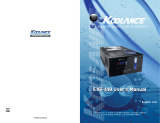 Koolance EXT-440CU User manual
Koolance EXT-440CU User manual
-
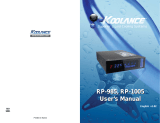 Koolance RP-1005 User manual
Koolance RP-1005 User manual
-
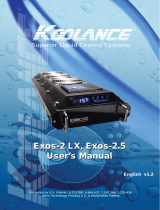 Koolance EXT-400SL-V2-R User manual
Koolance EXT-400SL-V2-R User manual
-
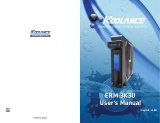 Koolance ERM-3K3UC-R User manual
Koolance ERM-3K3UC-R User manual
-
Koolance RP-1000SL User manual
-
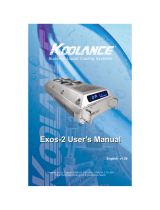 Koolance EX2-750BK User manual
Koolance EX2-750BK User manual
-
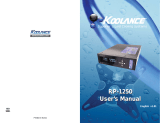 Koolance RP-1250-R User manual
Koolance RP-1250-R User manual
-
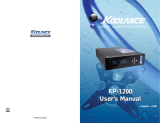 Koolance RP-1200 User manual
Koolance RP-1200 User manual
-
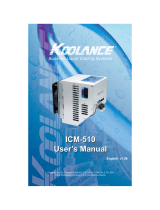 Koolance ICM-510 User manual
Koolance ICM-510 User manual
-
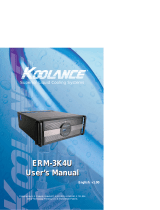 Koolance ERM-3K4U1 User manual
Koolance ERM-3K4U1 User manual
Other documents
-
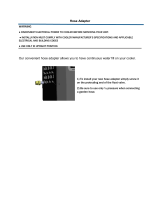 Hessaire 6018088 Installation guide
Hessaire 6018088 Installation guide
-
Braemar Controller EZE Thermostat Owner's manual
-
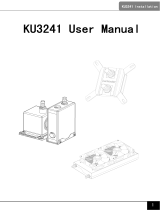 Larkooler Liquid Cooling Kit User manual
Larkooler Liquid Cooling Kit User manual
-
RTI ATX-2 Operating instructions
-
MAHLE ATX-2+Boost Operation Instuctions
-
MAHLE ATX-2+Boost Owner's manual
-
Eurotech Aurora Hive Development Kit Owner's manual
-
Recom PowerStation EVO Liquid Installation guide
-
Planar P2 User manual
-
Alecto BC-06 Owner's manual


























